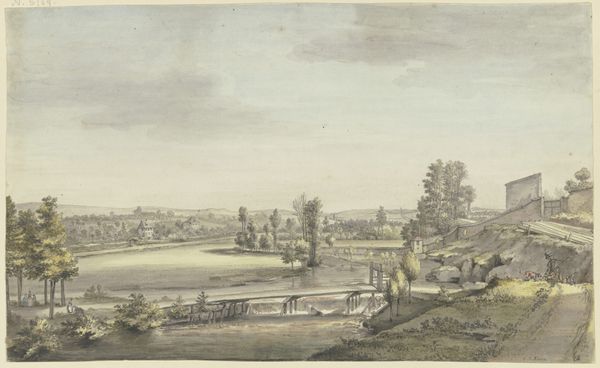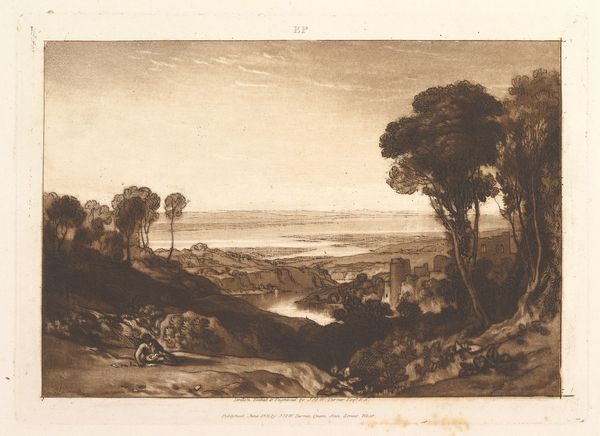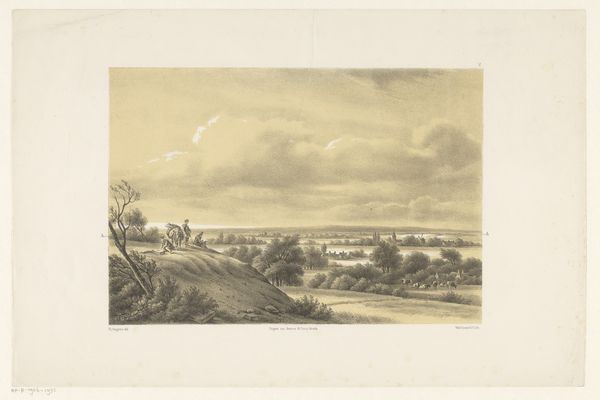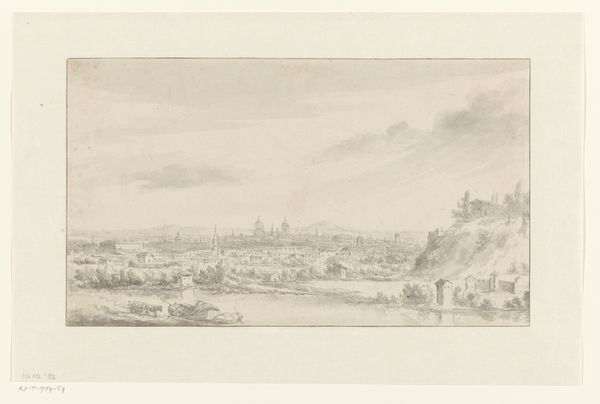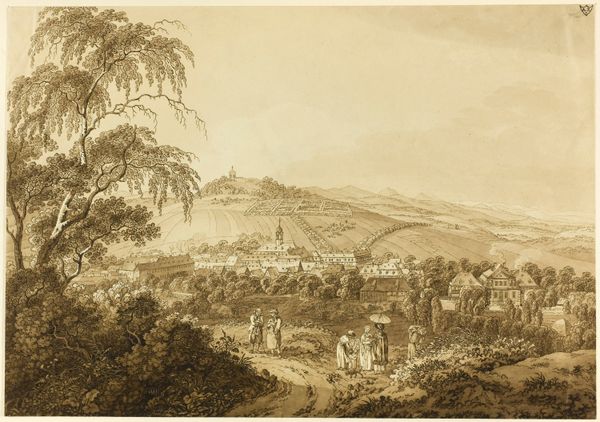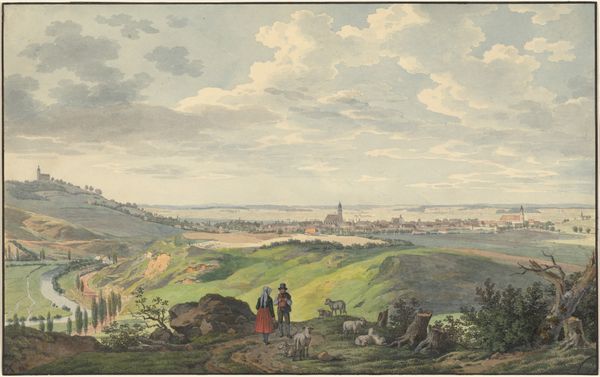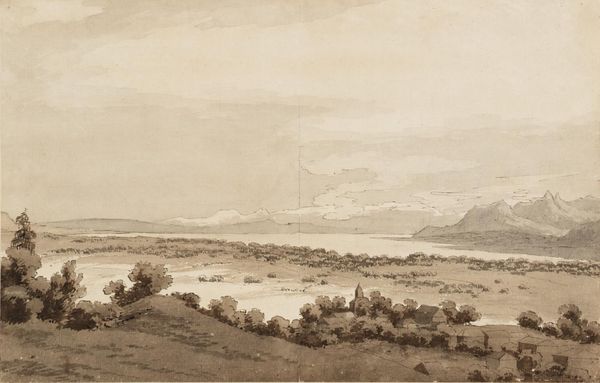
drawing
#
pencil drawn
#
landscape illustration sketch
#
drawing
#
amateur sketch
#
light pencil work
#
pencil sketch
#
old engraving style
#
personal sketchbook
#
pen-ink sketch
#
pencil work
#
watercolour illustration
Dimensions: 369 mm (height) x 537 mm (width) (bladmaal)
Curator: So, here we have J.C. Dahl’s "View of Kongsberg, Norway," believed to have been made sometime between 1825 and 1857. It’s currently held at the SMK, the Statens Museum for Kunst. Editor: It has a fragile, almost dreamlike quality. It’s like looking at a memory, faded and indistinct, but beautiful nonetheless. I'm struck by how calming it is. Curator: Dahl's work often served as a form of cultural and political advocacy. Norway was under Swedish rule during much of his career, and his paintings celebrated Norwegian landscapes, history, and identity. We need to consider how nationalism impacted even ostensibly apolitical landscapes. Editor: Absolutely. Though looking at this landscape, so peaceful... it feels almost radical now, doesn’t it? The sheer act of capturing this specific "Norwegian-ness" visually. Though for me, it speaks on more of a human scale; this is somewhere I feel safe and calm. A nice corner to daydream. Curator: It's crucial to acknowledge the privilege inherent in this romantic gaze. Whose stories are amplified in the national narrative, and whose are silenced or erased? Looking at Dahl's Norway through a postcolonial lens makes us conscious of what's excluded. It compels us to seek a fuller picture. Editor: And yet... there’s still something incredibly moving in this delicate sketch, in his almost palpable affection for the view, irrespective of cultural and sociopolitical frameworks, doesn't it just simply makes one want to go for a long walk? Curator: Art becomes powerful, I think, when we view it from all possible perspectives. This means acknowledging how the representation of landscape also can intersect with environmentalism, capitalism, or class issues. It's about seeing art not as isolated aesthetics, but connected nodes. Editor: I couldn't agree more, but in addition to what you mention, for now, I’ll embrace the beauty of a faded memory. It has been a truly eye-opening deep dive, thank you. Curator: Thank you too. It highlights that art always resides in layers, where a singular piece can provoke endless, important conversation.
Comments
No comments
Be the first to comment and join the conversation on the ultimate creative platform.
